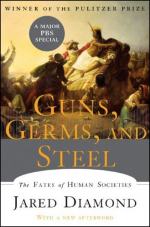|
This section contains 456 words (approx. 2 pages at 400 words per page) |

|
Chapter 7 "How to Make an Almond" Summary and Analysis
"Plant domestication may be defined as growing a plant and thereby, consciously or unconsciously, causing it to change genetically from its wild ancestor in ways making it more useful to human consumers" (pg. 114). All crops began as wild plant species. How did early farmers domesticate plants and what changes occurred to the plants from this process?
Plants spread their seeds through a variety of ways, including through wind, water, or having their seeds eaten and dispersed by various animals. Animals and humans tended to select particular plants from a given species to eat, perhaps because the berries on a certain plant were bigger or sweeter than others. Other selectors may have been bitterness, fleshy or seedless fruits, oily seeds, and/or long fibers. By harvesting and choosing these types...
(read more from the Chapter 7 "How to Make an Almond" Summary)
|
This section contains 456 words (approx. 2 pages at 400 words per page) |

|




